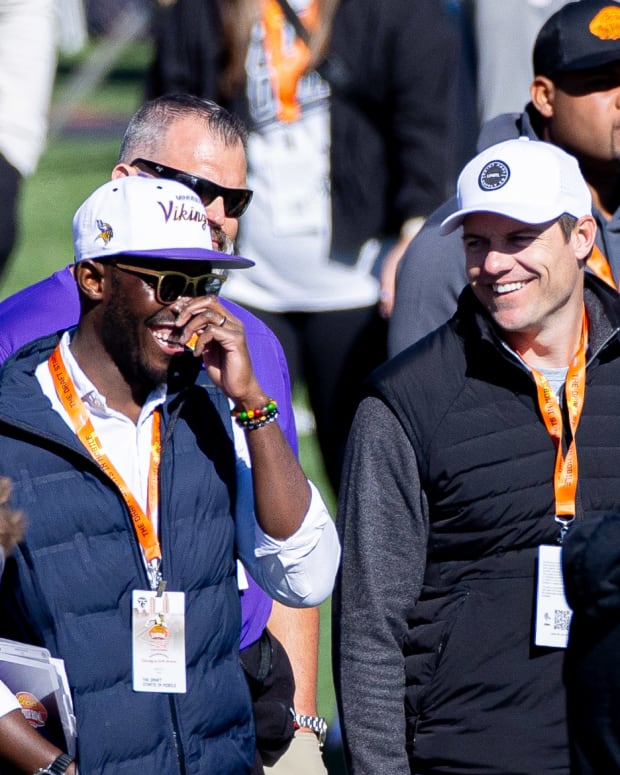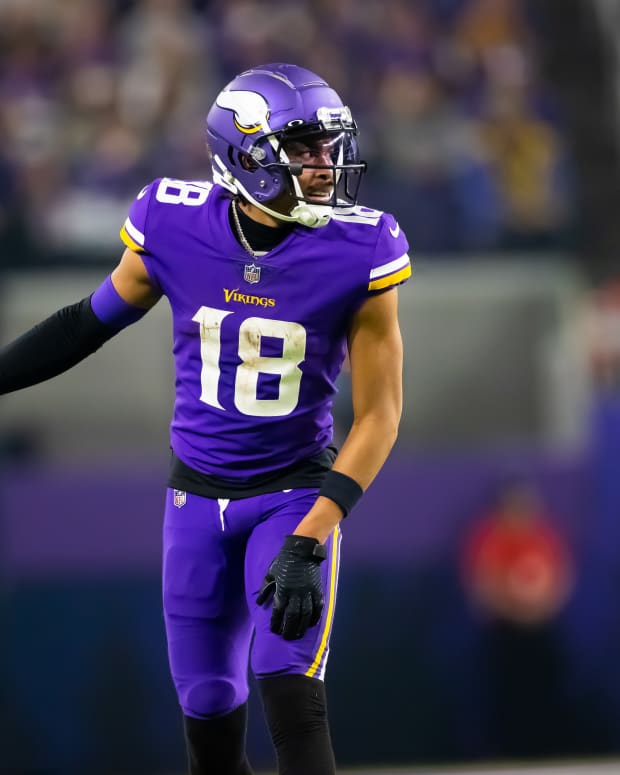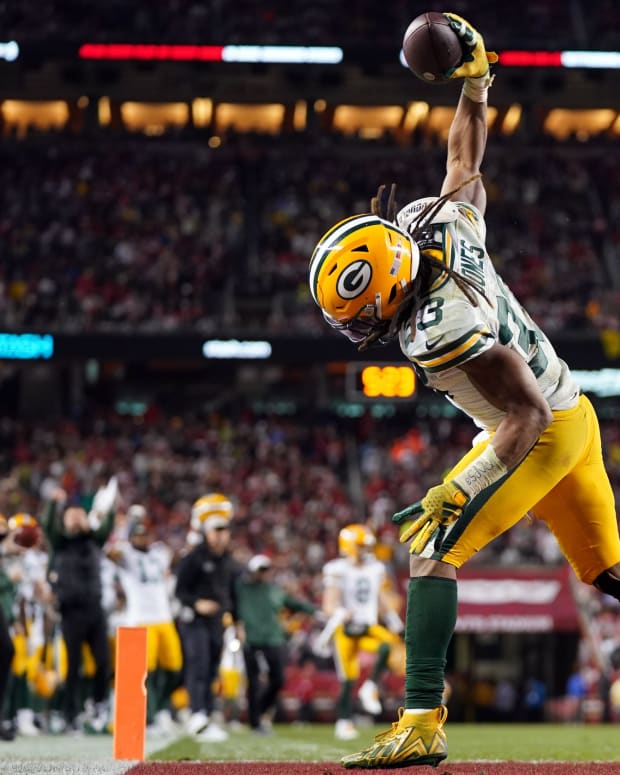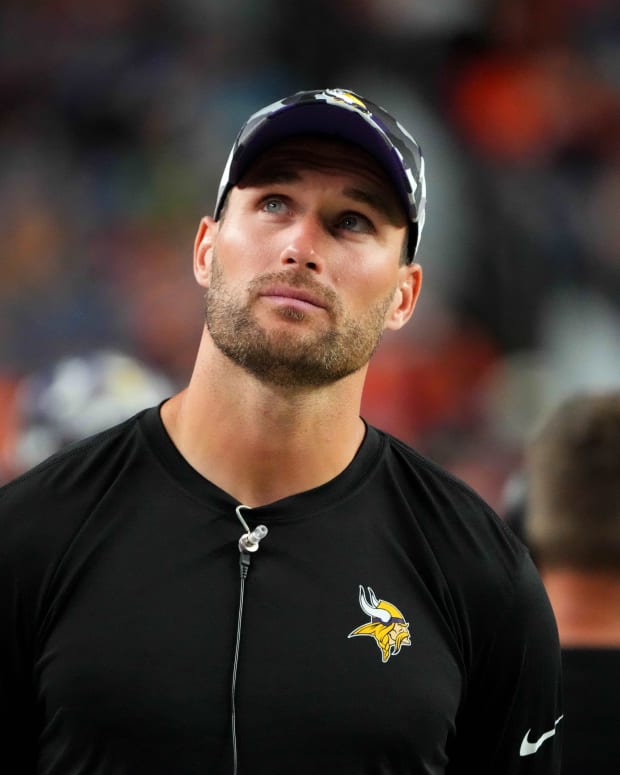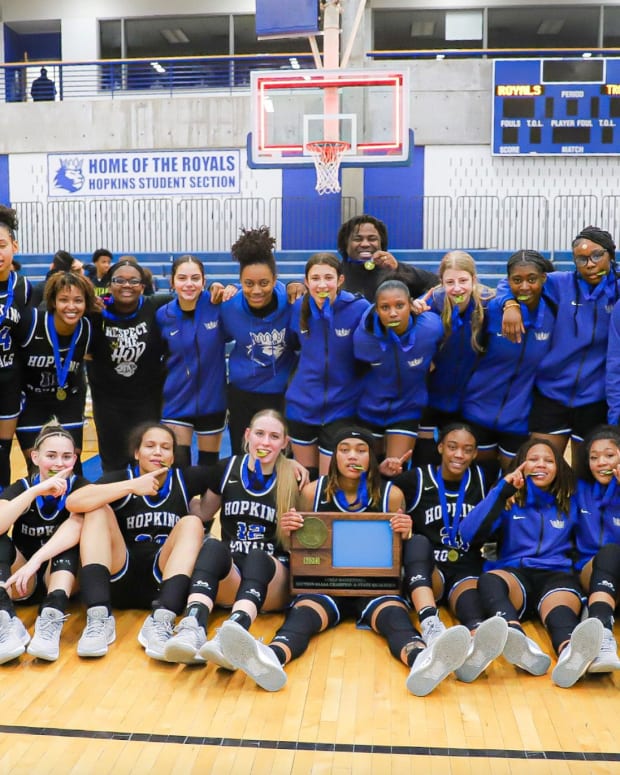SKOL Searching: Was that the Vikings’ best shot at a Super Bowl?
It’s the question nobody wants to think about right now. Not players, not coaches, not fans. In the aftermath of a playoff loss, especially one as disappointing as the Vikings’ first-round exit, the hunt for silver linings is bountiful.
With a pair of rose-colored glasses in hand, it’s easy to build a case that they could be back again next year. Surely Justin Jefferson should only improve, as will its bookend of top-tier offensive tackles. Another year in Kevin O’Connell’s scheme could do wonders for Kirk Cousins and the rest of the offense. O’Connell and Kwesi Adofo-Mensah have another season to get comfortable and implement their vision too.
But the reality, one that every team without a Hall of Fame quarterback must grapple with, is that it’s hard to make it this far – and it’s even harder to repeat it.
That might be even more true for a team in Minnesota’s position.
It starts with all the statistics that everyone knows by now. The Vikings were the first team in NFL history to win 13 games with a negative point differential. That -3 regular season differential was the second-lowest among division winners (the 8-9 Buccaneers had an NFC South-worst -45). The 11-0 record in one-score games was equally impressive as it was unrepeatable. Reverse only three of those games, still a rather remarkable 8-3 record, and Minnesota would’ve been fighting until the last week for the division title.
Those statistics alone indicate regression is likely.
Then add in the 30th-ranked scoring defense, far and away the worst of the so-called “contenders.” Of the eight playoff teams still alive, the Giants are the next, but they rank 18th. Only two offenses still in the playoffs scored less on offense than the Vikings – the Giants and the Jaguars, both teams that are expected to lose in the second round. Minnesota ranked 27th in Football Outsiders’ DVOA metric. Four of the five teams below the Vikings fired their head coach. They finished 18th in expected points added per play (EPA/play) and eighth in success rate on offense. On defense, they finished 16th in EPA/play and 25th in success rate.
All that confirms what was evident from watching Minnesota all season long. The team was living on the razor’s edge and miraculously, both by skill and good fortune, emerged victorious time after time.
A big part of that was injury luck. For most of the season, the Vikings had the same group on the field – at least at the most important positions. In the most critical times each week as Minnesota looked to make another improbable comeback or stave off an opponent, having continuity on both sides of the ball is an extraordinary help.
Brian O’Neill’s absence certainly came at an inopportune time, but Oli Udoh allowed just one pressure against the Giants, per PFF.
Outside of O’Neill, Minnesota had the other four starters along the offensive line. Cousins was healthy all year long. As were the top three wide receivers and T.J. Hockenson. Dalvin Cook avoided the injury bug for most of the year. On defense, the dynamic, but injury prone, the duo of Danielle Hunter and Za’Darius Smith missed one game combined. Defensive stalwarts Eric Kendricks and Harrison Smith were healthy come playoff time too.
That’s highly unusual for most teams entering the playoffs. Oftentimes, the teams that make it deep into the postseason are the healthiest. The Vikings were set up to do that. The likelihood of that type of availability continuing for the next several seasons is unlikely – but not completely out of the question given the track record of the training staff dating back to its origins with the Los Angeles Rams.
All of that is looking to the past to predict the future. While it’s true that last season can help set the expectations for next year, and many of the advanced statistics point toward regression, so much about this roster and the team’s overall direction are unknown.
The salary cap situation helps paint a clearer picture – although not one that most will like.
Heading to the offseason, Minnesota is $24.4 million over the cap, per OverTheCap.com. There are quick ways to bring that number down. Another Kirk Cousins extension could drop his $36.3 million cap hit considerably. The Vikings can save $9.5 million by cutting Kendricks and nearly $8 million by cutting Cook. Smith, Jordan Hicks and C.J. Ham are also potential cap casualties. As are restructuring any of those contracts to push money down the road.
But where does that leave Minnesota? Likely without most of its veteran leadership and still without much cap space to address free agency and potential re-signings. Center Garrett Bradbury expressed his desire to return. They’ll need to re-sign him or find a replacement to start at center. If Cook is released, would the Vikings try to re-sign Alexander Mattison? T.J. Hockenson and Justin Jefferson are also in line for extensions soon.
Those are hard questions and ones without obvious answers when the direction Adofo-Mensah wants to take this team is unclear. He’s set up the possibility of both directions with his “competitive rebuild” comments from before the season. What is clear is that if Minnesota attempts to run it back, it will come at a considerable cost to the future or will require plenty of low-risk bets that need to work out – an always dicey proposition.
Then comes the competition. The NFC seas parted in many ways for the Vikings this season. The Green Bay Packers were expected to be a Super Bowl contender. They flopped. So did the Buccaneers, who won the only division worse than the NFC North. The defending Super Bowl champion Los Angeles Rams were destroyed by injuries. Much of the NFL middle class fell off, too.
Of course, the Philadelphia Eagles and San Francisco 49ers looked like juggernauts for most of the season, but one is quarterbacked by a rookie seventh-rounder and the other has only one mediocre playoff performance under his belt. If there was a year to catch those teams off guard, it was likely this year.
Now that leaves Minnesota in a situation where the competition around it is likely to improve. Even in its division, the Lions are clearly trending upward with cap space to use and two first-round picks at their disposal. Whether they chase an upgrade at quarterback or continue to build around Jared Goff, there’s no reason to expect they’ll be worse. As is the case for the Bears, who may not be an immediate threat to win the division in 2023, but have $95 million in cap space already and a No. 1 draft pick that they intend to dangle in front of plenty of desperate bidders. Green Bay may be the only team trending downward in the division, but that assumes Aaron Rodgers’ departure. If Rodgers returns with another year to develop with his wide receivers, there’s no reason to believe they can’t improve on an 8-win season.
This circles us back to the initial point. It’s really hard to build a consistent winner without a Patrick Mahomes or Josh Allen as the quarterback.
Kirk Cousins has been an above-average but never elite quarterback for his entire tenure in Minnesota. It’s led to two playoff appearances and one win, par for the course for teams with Cousins-like quarterbacks. The only difference is some of them capitalized on one of their few opportunities and others didn’t.
Matt Stafford has made the postseason four times in 14 years, about once every three or four years. In his first three appearances, he never won a game. Then on the fourth try, he won the Super Bowl. Derek Carr has made the playoffs twice in nine seasons. No playoff wins. Alex Smith is 2-5 in playoff games, making the postseason as a starter in five of 14 years. Matt Ryan has made the playoffs six times in 15 years, appearing in the conference championship twice. Jared Goff has made the postseason three times in six years, the 2018 run to the Super Bowl is the only year he won any playoff games.
The reality of living in the middle class of NFL quarterbacks is that the opportunities only come every few years – and it’s what teams can do in those limited chances that define the careers of the quarterbacks and their teams. The Vikings had one of the best chances they’ve had in years to do something special and they failed.
When they get their next chance is anyone’s guess.
